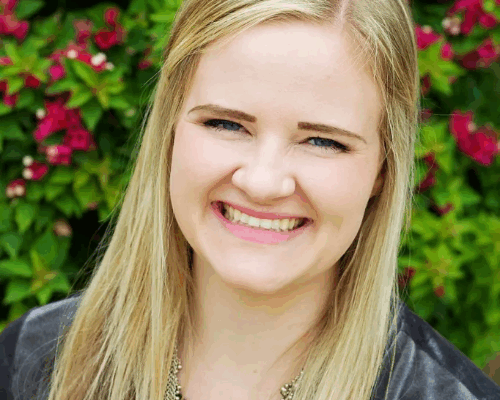
If you’re a Plotter—a writer who habitually outlines and pre-plans your books—you’ve likely heard of something called “Save the Cat.” But if you’re a Pantser—a writer who prefers to write intuitively and without a plan—I hope you will stop and take a look at this article because I believe “Save the Cat” method, or STC, is the perfect tool for every writer, even if you’re a Plantser—a writer who does a little of both.
Origin of the “Save the Cat” Method
Save the Cat: The Last Book on Screenwriting You’ll Ever Need by screenwriter Blake Snyder came out in 2005. The term “save the cat” relates to the moment when the unlikeable main character does something heroic, like saving a cat from a tree. This signals to movie-goers that there is a good side to him, so it’s okay to root for him.
When we refer to “Save the Cat,” though, we’re most often speaking about the 15-point “beat sheet” Snyder presents in the book. The method caught on for novelists because Snyder’s analysis of a 150-page screenplay can also be applied to writing a novel of 250 pages or more. You can compare the novel-writing process to a road trip. The method breaks the process down into manageable parts like pausing at rest stops along the way as opposed to traveling on a never-ending highway where you have no idea where the next rest stop will be.
With more readers these days wanting a movie-like experience when they read, the proven blockbuster movie formula is hard to ignore. It’s worked for hundreds of thousands of authors in the nearly two decades since the book’s release, and it’s a staple in many writers’ toolboxes—including my own.
Road Trips and “Save the Cat”
The STC Beat Sheet consists of fifteen “beats,” or story points. You can think of them as guideposts on a mapped road trip. You know where you’re starting, you know your destination, and you’ve planned some specific stops along the way. That’s the Beat Sheet. You wouldn’t want to go on a road trip without some sort of plan. Otherwise, you wouldn’t know how much time to take off work or where to stop for gas.
But what if you prefer go-with-the-flow road trips where you’re free to wander from the main highway when something catches your interest? You still know how to get back to the main road, and you still know where you need to turn back—you just get to enjoy a little adventure on your way there.
That’s “Save the Cat” too.
Over a series of six articles, we’ll explore the meaning and purpose of the STC Beat Sheet and discover how it’s the best tool for all writers—Plotters, Pantsers, and Plantsers alike.
Acts and Beats in “Save the Cat”
The STC Beat Sheet is comprised of three acts and the following beats:
Act 1: Opening Image, Theme, Setup, Catalyst, Debate, Break into Act Two
Act 2: B-Story, Fun & Games, Midpoint, Bad Guys Close In, All Is Lost, Dark Night of the Soul, Break into Act Three
Act 3: Finale, Closing Image
Each act has a purpose, which helps us understand the beats within it.
Act 1 is your “thesis” world. It’s a statement of how things are. Each beat within Act 1 is a study of your protagonist’s regular life and how they interact with it. Even the Catalyst and Debate—the “invitation”—deal more with the life that is rather than the one beyond the horizon. Knowing you’re in the thesis world helps you focus your story and avoid rushing your reader.
Act 2 is your “antithesis” world or the upside-down world. Just as the phrase “upside-down world” implies, nothing should feel commonplace or “normal” in this act. When you’re unsure what to write, write about what’s uncomfortable because it’s only when life pushes us out of our comfort zone that we truly learn and grow.
Act 3 is your “synthesis” world. If Act 1 was one slice of bread and Act 2 was all the yummy stuff you put on a sandwich, Act 3 is the second slice of bread. Without it, you don’t have a complete story. Act 3 brings the hero from Act 1, who is a changed person due to everything they learned in Act 2, into a new world where they can save the day, get the girl, live happily ever after, etc.
Examples of the Method in Action
What “Save the Cat” does, above all else, is craft a story of transformation. It’s still about the plot, or story, but it guides you to create flawed, fallible characters who are challenged by the plot until they become changed people. Take Luke in Star Wars as an example. Anxious for adventure, he leaves the only world he’s ever known without a second glance (Act 1). Despite being told he has a gift for the Force, he can’t control it. He struggles with authority, eventually choosing technology over the Force (Act 2). But in the end, tools fail him, and he must trust the Force to accomplish what must be done (Act 3).
In Iron Man, Tony Stark is unwilling to acknowledge any responsibility for the damage done by the weapons he sells to the enemy (Act 1). But through his humbling experience at the hands of those enemies (Act 2), he begins the arc that will transform him into a hero (Act 3).
Gracie Hart from Miss Congeniality is a tough-as-nails cop who purposefully downplays her feminine side because she believes she can’t be both a successful cop and a beautiful woman (Act 1). But as she works undercover in a beauty pageant, she discovers she’s been wrong all along (Act 2). She learns to embrace who she is and what she is—woman, cop, friend—and in doing so, she finds she’s a happier version of herself (Act 3).
Plotters, Pantsers, Plantsers, and “Save the Cat”
A Plotter can take Act 1’s purpose and flesh out all the scenes that will demonstrate a character’s flaw.
A Pantser can take Act 1’s purpose and let it guide them as they write.
And a Plantser can do whatever they please—plotting when it’s helpful, and free writing when it’s not.
As long as you keep the purpose in mind, any of these modalities will help you write your best novel yet.
I hope this brief overview has been helpful. Stay tuned for the next article, where we’ll dive into the beats!

Ali Cross
Find Ali at her website or @thealicross online.




Leave a Reply